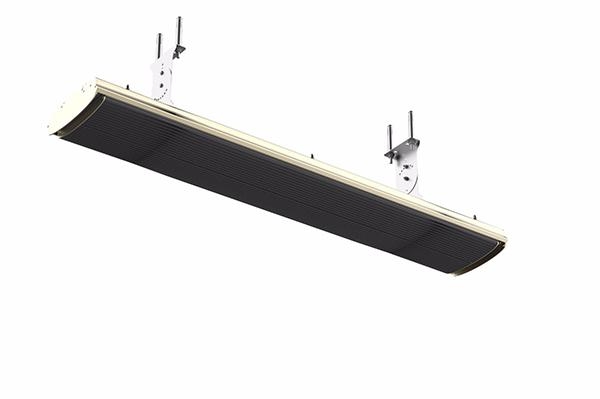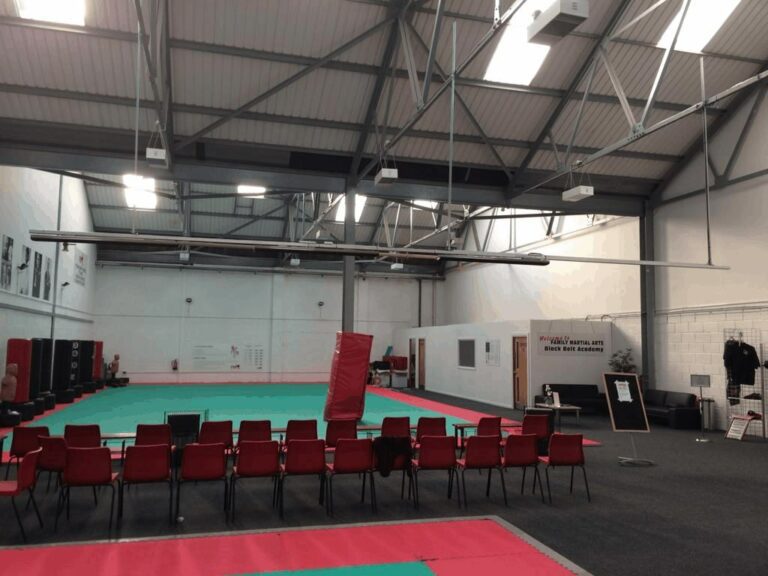Infrared heating uses electromagnetic radiation to transfer heat directly to objects and surfaces without using a heating medium, like air or water. The heater simply emits infrared radiation that is absorbed by surfaces and converted into heat energy. This process is known as infrared heating or radiant heating and it’s considered more energy-efficient than traditional heating systems. OKEL are experts in different types of heating systems to efficiently heat various businesses, no matter the size, insulation or footfall. In this post, we’ll explore infrared heater costs, including installation and running costs, energy efficiency and the pros and cons of the heating system. Read on to find out more when it comes to infrared heating costs in the UK.
How much does it cost for infrared heater panels?
The cost of infrared heater panels can vary depending on the size, type, and brand of the panel. Generally, a single panel can cost anywhere from around £50 to £500 or more.
Small electric infrared panels that can be wall mounted or on a ceiling typically cost between £50 to £200, while electric far infrared systems for commercial or industrial use could cost several hundred pounds or more. The cost of installation and any necessary wiring or modifications to the electrical system should also be factored into the overall cost of the system.
It’s worth noting that while infrared heating panels can be more expensive to purchase and install compared to traditional heating systems, they are often more energy-efficient and can save money on heating bills in the long run.

Infrared heater installation costs
The cost of installing an infrared heater can vary depending on several factors, including the size and type of the heater, the location where it will be installed, and any additional electrical or structural work that may be required.
In general, the installation cost for an infrared heater can range from around £100 to £500 or more, depending on the complexity of the installation. For example, installing a small infrared panel heater on a wall or ceiling may be a straightforward process and cost around £100 to £200, while a larger commercial or industrial unit that requires more advanced electrical or structural work could cost several hundred pounds or more.It’s important to note that the installation cost for this heating solution also includes the cost of any additional equipment or materials needed, such as mounting brackets, wiring, or control panels. To get an accurate estimate of the installation cost, it’s best to get in touch and we can provide a detailed quote over the phone. For example, during out installation assessment for Family Martial Arts in Liverpool, we had to take into consideration the height of the ceiling and create a suspension so that the infrared heaters were at least 3m over the spectator area.

Infrared heater running costs
The running cost of an infrared heater can also vary depending on several factors, including the size and power of the heater, the temperature setting, and electricity prices in your area.
In general, infrared heaters are considered to be more energy efficient than traditional heating systems because they heat objects and surfaces directly instead of heating the air around them. This means there’s less heat loss due to air circulation or convection, resulting in lower energy consumption and reduced heating costs.
The running cost of an infrared heater can be calculated using the following formula:
Electricity cost (per kilowatt-hour) x Power rating of the heater (in kilowatts) x Number of hours of use = Total cost of running the heater.
For example, if your electricity cost is £0.15 per kilowatt-hour and you have a 1.5-kilowatt infrared heater that you run for 4 hours per day, the daily running cost would be £0.15 x 1.5 x 4 = £0.90. So the cost of running the heater for a month (30 days) would be approximately £27.
It’s important to note that this is just an estimate, and the actual running cost of an infrared heater can vary depending on your usage habits and other factors. However, infrared heaters are generally considered to be a cost-effective heating option due to their energy efficiency and targeted heating capabilities.
Receive a Free Quote for Your Infrared Heating
Is it cheaper to have electric heating or infrared heating?
In general, infrared heating is considered to be more cost-effective than traditional electric heating systems because it heats objects and surfaces directly instead of heating the air around them.
Electric heating systems typically rely on convection heating to warm the air in a room and can result in significant heat loss, as the warm air rises and escapes through leaks in windows, doors, and other openings in the building envelope. As a result, electric heating systems may require more energy to maintain a comfortable indoor temperature, leading to higher heating costs.
Infrared heaters can also be more cost-effective than other heating systems, such as gas-fired systems because they do not require a heating medium like air or water to transfer heat. This means that there are no energy losses due to heat transfer, and infrared heaters can operate more efficiently and cost-effectively.
However, it’s important to note that the cost-effectiveness of any heating system depends on several factors, including the size of the space being heated, the insulation levels of the building, and the cost of electricity in your area.
How can infrared heating save you money in the long term?
There are many ways that infrared heating can save you money in the long term:
Energy Efficiency: Infrared heaters are highly energy-efficient because they heat objects and surfaces directly instead of heating the air around them. This means that there is less heat loss due to air circulation or convection, resulting in lower energy consumption and reduced heating costs.
Zoned Heating: Infrared heating can be used to provide targeted heat to specific areas or zones within a building, allowing you to only heat the areas that are being used. This can help reduce heating costs by avoiding the need to heat unoccupied spaces.
Reduced Maintenance: Infrared heating systems typically require less maintenance than traditional heating systems because they do not have moving parts or require complex ductwork or piping. This can help reduce maintenance costs over time.
Improved Air Quality: Infrared heating does not rely on air movement to transfer heat, which can help reduce the circulation of dust, allergens, and other contaminants in the air. This can improve indoor air quality and reduce the need for air filtration systems, which can be costly to operate.
Long Lifespan: Infrared heating panels typically have a long lifespan, lasting up to 25 years or more with proper maintenance. This can help reduce replacement and installation costs over time.
Although the cost of infrared heating can vary based on electricity prices in your area, the number of panels needed for your installation and other factors, these pros significantly outweigh any cons of this heating solution.
Overall, the combination of energy efficiency, zoned heating, reduced maintenance, improved air quality, and long lifespan can make infrared heating a cost-effective choice in the long term, potentially saving you money on heating costs and reducing your environmental impact.
Energy-efficient heating for specific needs
If you’re looking for an energy-efficient option to heat your business, OKEL has widespread knowledge of the many fuel types and heating systems available. Every project is different and we aim to not only meet your heating needs but provide you with advice to make your premises as energy efficient as possible. We understand the Net Zero commitments for businesses and can help you reach the requirements set out by the government to reach a greener future.
If you’re looking for a smarter solution to your heating system, call us today or fill in our contact form to receive your free site survey. We’ll get to know your needs and build a bespoke solution that meets your every requirement.
